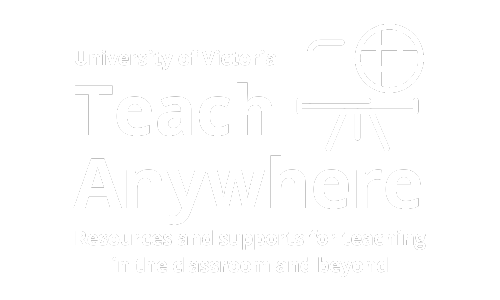Educational research has shown that student–faculty interactions are important [1]. Therefore, it is essential that you include multiple ways for students to contact you and for you to interact with students. Frequent and quality student–faculty interactions lead to...
Posts by Category:
Teaching in a multi-access room
Familiar teaching strategies might look a bit different in a multi-access classroom, but they have the same underpinning.In a multi-access classroom, you can deliver a lecture to both in-room and remote students, synchronously. You can also engage students through...
Supporting students with multi-access learning
Multi-access courses can provide students with flexibility in terms of accessing their courses. Since this format will be new for many students, this article provides tips and strategies for supporting students in a multi-access course and class.Course Culture Explain...
Interim strategies for livestreaming
Instructors considering ways to build flexibility in their courses this term may be wondering if students can attend class remotely. Two technologies (Echo360 Livestream or Zoom) offer the ability for students to remotely join an in-person class. The current...
Learning-centred instructional strategies
What is learning? Student learning is a relatively permanent (not transient) change in students’ knowledge, skills, beliefs, and attitudes Student learning is a process (not a product) inferred from what the student does Student learning arises from what the student...
Teaching online
Learning and instruction in online courses can happen in many different formats or modes. Two major modes are synchronous (real-time, everyone together at the same time) and asynchronous (self-paced or flexible – activities do not necessarily take place at the same...
We are here to help!
Access your LTSI Faculty Support Team & supports in four ways:
We acknowledge and respect the lək̓ʷəŋən peoples on whose traditional territory the University of Victoria stands, and the Songhees, Esquimalt and W̱SÁNEĆ peoples whose historical relationships with the land continue to this day.
